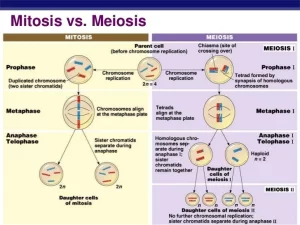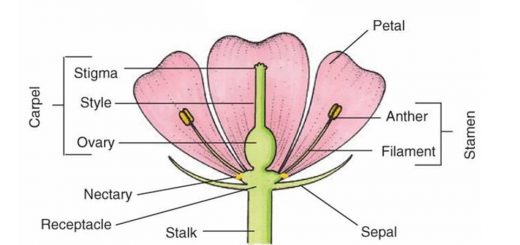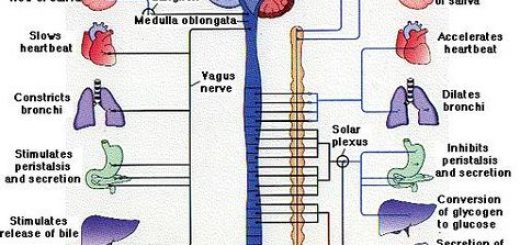Cells types, Chromosomes, Cell division, Phases of mitosis division and Liver Transplantation
Chromosomes are considered the genetic material for the cell because they contain the genes that carry the genetic traits of the living organism, The cell nucleus is the part of the cell responsible for cell division because it contains the genetic material of the living organism which consists of a number of chromosomes that have the main role in cell division.
Types of cells
Not all cells of multicellular organisms are similar, but they have some differences, from which how they divide to increase their number, The cells of multicellular living organisms are two types which are Somatic cells, and Reproductive cells.
Somatic cells: All body cells (except reproductive cells). Such as:
- The cells of (liver, skin, kidney,…) in humans and animals.
- The cells of (roots, stem, leaves,..) in plants.
Reproductive cells Such as:
- Testes and ovaries cells in humans and animals.
- Anthers and ovaries cells in flowering plants.
Chromosomes
Most types of cells contain a nucleus, which contains thread-like bodies called Chromosomes, that have the main role in cell division, Chromosomes are thread-like bodies present in cells nuclei and they represent the genetic material of the living organism.
Structure of chromosomes
The general structure of chromosomes: Each chromosome consists of: Two connected threads, each thread is called “Chromatid, The two chromatids are connected at a point known as “Centromere, The centromere is the point of connection of the two chromatids of the chromosome.
Chemical structure of chromosomes: Each chromatid consists of:
- A nucleic acid called DNA which carries the genes that carry the genetic traits of the living organism.
- Protein.
DNA is the nucleic acid that carries the genetic traits of the living organism.
Number of chromosomes
- The number of chromosomes in living organisms differs from one species to another.
- The number of chromosomes is fixed among the members of the same species.
- The number of chromosomes in somatic cells and reproductive cells differs from the number of chromosomes in gametes for the same organism as follows:
- Somatic cells and reproductive cells: Each one of them contains a complete number of chromosomes (complete two sets of chromosomes, one from the male gamete and the other from the female gamete), The number of chromosomes is a diploid number (2N).
- Gametes [male gametes (sperms) and female gametes (ova)]: Each one of them contains a half number of chromosomes present in the reproductive cell or in the somatic cell, The number of chromosomes is a haploid number (N).
Importance of chromosomes
- They represent the genetic material of the living organism.
- They have the main role in cell division.
- Knowing the number of chromosomes helps in identifying animal and plant species.
If the number of chromosomes in a human pancreatic cell equals 46 chromosomes (23 pairs of chromosomes), the chromosomes in:
- In Liver cells: there are 46 chromosomes.
- In Reproductive cells: there In are 46 chromosomes.
- In Sperm: there are 23 chromosomes.
Cell division
Cell division allows the living cell to divide into two cells or more, to aim the growth or reproduction.
Types of cell division
There are two types of cell division.
- Mitotic cell division (Mitosis) or direct cell division.
- Meiotic cell division (Meiosis) or reduction division.
Mitotic cell division (Mitosis)
Mitotic cell division (Mitosis) is a type of cell division at which a somatic cell divides into two new somatic cells, each of them contains the same number of chromosomes (diploid number) of the parent somatic cell.
Site of occurrence: It occurs in somatic cells only such as:
- Cells of the pancreas, skin, liver, and kidney (in humans and animals).
- Cells of roots, stems, leaves, and seeds (in plants).
Some cells in the human body are not divided at all:
- Neural cells (as they don’t contain centrosome, which plays a role in cell division).
- Adult red blood cells (as they don’t contain a nucleus, which contains chromosomes).
The damaged nerve cells can’t be compensated because nerve cells don’t divide at all.
Importance of mitosis
It plays an important role in:
- Compensation for the damaged cells.
- Completing the asexual reproduction process.
- Growth of living organisms (the growth of a seed by mitosis to a complete plant).
Phases of mitosis
Before starting mitosis, the cell passes through a phase called interphase.
Interphase
Interphase has an important role before starting mitosis as interphase prepares the cell for division by:
- Occurrence of some important biological processes.
- Duplicating the amount of the genetic material (DNA).
Duplicating the genetic material doesn’t mean increasing its number, but it means copying it several copies before the cell division, and so each new resulted cell obtains its complete copy of the genetic material of the parent cell.
Interphase is the phase which is occurred before starting the cell division process, at which the cell prepares for division by the occurrence of some important biological processes and duplicating the amount of the genetic material (DNA).
Chromosome which consists of 2 chromatids, do not appear before cell division. Before cell division, the chromosome appears as one chromatid. During prophase, chromosome appears in the form of 2 chromatids connected at the centromere.
Phases of mitosis division are: Prophase⇒ Metaphase⇒ Anaphase⇒ Telophase
Phases (stages) of mitosis
Prophase
In this phase: the Chromatin reticulum condenses (intensifies), then appears in the form of long, thin, and double-strings chromosomes. At the end of this phase: Nucleolus and nuclear membrane disappear. A network of filamentous fibers called “spindle fibers” is formed at the centrosomes extending between the two poles of the cell. Each chromosome is connected with one of the spindle fibers by the centromere.
Metaphase
In this phase: The chromosomes which are connected with the spindle fibers are arranged at the cell equator.
Anaphase
In this phase: The centromere of each chromosome splits lengthwise into two halves, so the chromatids separate from each other, The spindle fibers begin to shrink and two identical groups of chromosomes (each contains single chromatids) are formed, Each group of chromosomes migrates towards one of the cell’s poles.
Shrinking of spindle fibers during anaphase of mitosis division to form two identical groups of chromosomes at each pole of the cell.
Telophase
In this phase: The spindle fibers disappear. A nuclear membrane is formed around the chromosomes at each of the cell’s poles leading to the formation of two new nuclei. A nucleolus is formed at each pole of the cell. The chromosomes inside each nucleus convert into a chromatin reticulum again. At the end of this phase: the cell divides into two new cells, the nucleus of each of them contains a complete number of chromosomes (2N) of the parent cell.
The changes that occur in telophase are called adverse changes because the changes that occur in telophase are adverse to those that occur in prophase.
In animal cells, the spindle fibers are formed by the centrosome. In plant cells, there are no centrosomes, so the spindle fibers are formed by condensing the cytoplasm at two poles of the cell.
Liver Transplantation
Some somatic cells such as liver cells are not divided in normal conditions but they retain the ability to divide under certain circumstances, For example, if the liver gets injured or a part of it is cut, the remaining cells undergo many mitotic divisions to compensate the missing part, this is the scientific basis used in liver transplantation.
The liver transplantation process is performed to replace the infected patient’s liver with a part of a healthy donor’s liver, as time passes, the liver of each of them is completed due to the occurrence of mitosis divisions.
You can subscribe to science online on YouTube from this link: Science Online
You can download Science Online application on Google Play from this link: Science Online Apps on Google Play
Meiotic cell division (Meiosis) or reduction division stages & features
Phases of Meiotic cell division (Meiosis), Nanotechnology & cancer treatment
Cell division types, Mitosis, Meiosis, Reductional division & Equatorial division
Cell Structure, the function of Golgi apparatus, Endosomes & Lysosomes




